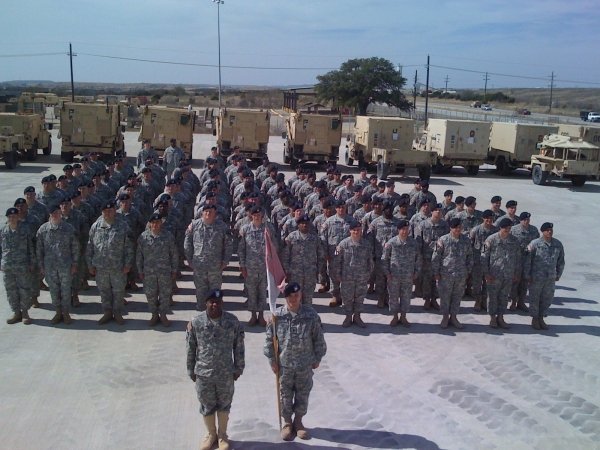How an Army Veteran's Next-gen Network Discovery Platform is Kicking a Hole in the Universe
When most founders of software companies talk about their days "in the trenches," they're referring to the time they spent working in software development or engineering jobs prior to launching their own companies. Not Cyberspatial.
When Cyberspatial co-founder and CEO Lawrence Nunn speaks about his time in the trenches, he means it literally. The career path that led him founding a software company included two deployments to Iraq as a tank officer – not to mention an education at West Point, multiple graduate degrees and high-level positions in the U.S. Cyber Command during its early days.
Cyberspatial is currently working with the Equinix Metal Startup Program, which is helping it with infrastructure expertise to build out and house its platform. Here is the story of how Nunn has leveraged his unique experiences and skill sets to build a startup specializing in next-generation network analysis software.
A soldier turned cyberwarrior
In many ways, Nunn's life story began ordinarily enough. He grew up in a middle class household and started his first job as a newspaper delivery boy at a young age – so young, in fact, that he had to work under his sister's name, because he wasn't old enough to hold the job officially himself.
Later, as a high school senior unsure what to do with the rest of his life, Nunn decided to apply to West Point for college not because he had charted a carefully planned path into adulthood, but simply because "they had a shiny packet in my school's counseling office that stood out to me."
West Point accepted Nunn and turned him into an armor officer with the U.S. Fourth Infantry Division. That role, combined with the education in 1990s-era computing and information technology that he received as a cadet, primed Nunn to help pioneer digital systems for managing armored vehicles and the logistics networks necessary to support them. (Even today, decades removed from his role on the frontlines, Nunn can rattle off statistics about, for instance, how much fuel a tank consumes each day and how many tankers are necessary to keep it operating.)
After putting his innovations to the test during two deployments to Iraq in the 2000s, Nunn returned stateside. Hungry for more education – not to mention "a job where my body would hurt less" – he earned two master's degrees, then briefly returned to his alma mater to teach.
But the government had different plans for Nunn. Recognizing his unusual IT and software development talents, it moved him from West Point to the Pentagon, where he managed offensive cyber strategies for the Department of Defense. He later joined the Cyber Command, the branch of the military devoted to cyber operations, after its founding in 2010.
Founding Cyberspatial
Nunn founded Cyberspatial and built Teleseer to be that software.
Teleseer is a network asset discovery platform that builds a digital twin of your network to assist security operations. Businesses can either deploy Teleseer on live networks to understand and interpret them in real time, or feed packet capture files into the platform to generate automated maps and network analyses.
Unlike conventional network mapping software, Teleseer is completely passive. It collects detailed information about each network endpoint, as well as communications between endpoints, without relying on endpoint-based agents or other intrusive, resource-heavy techniques. It's also capable of analyzing traffic based on over 5000 different protocols and apps – which is far more than many conventional network analysis tools, like Wireshark, can handle – and it can support networks containing millions of devices.
Teleseer can also trace network granular activity over time – which can be useful, for instance, for tracking failed login attempts from malicious users on different endpoints over an extended period.
"We are reverse-engineering network topologies and patterns, and we're doing it all passively," Nunn says. "You get context very, very quickly, along with a shared operational picture so you can communicate with others."The ultimate goal of the platform is to increase the productivity of network operations teams by a factor of 100.”
Along with a small group of collaborators, Nunn began developing the Teleseer platform in 2019. The beta offering, whose backend is hosted on Equinix Metal, launched late last year and is currently in use across about 30 countries.
To be sure, it's early days for Cyberspatial. There remains a lot of work to do to build out its platform Teleseer – such as adding support for more cloud platforms, developing on-premises data collectors and implementing advanced packet carving features. But Nunn is confident that, just as he evolved during his military career from a humble cadet into a cutting-edge cyber defense leader – he'll grow Cyperspatial into a revolutionary network security technology platform.
Kicking a "hole in the universe"
By many people's standards, Nunn was wildly successful by the time he was helping to run the nation's fledgling cyberwarfare agency. He had already notched a long series of major accomplishments in his military career, and he could genuinely claim pioneer status in helping to tackle some of the newest and most complicated defense challenges faced by his country.
But for Nunn, that wasn't good enough. He wanted to make an even bigger impact, and he didn't see his bureaucracy-laden government job as a path to doing so. "I realized that if I wanted to be able to kick a hole in the universe, I needed to work from outside the government," he explains.
He decided that the hole he wanted to kick was helping organizations shine light on their networks. In his cyberdefense role with the government, Nunn had helped federal suppliers manage the aftermath of cyberattacks. He often discovered that "nobody understood their network, nobody understood what was communicating with what and there was no shared operating picture," and he saw an opportunity to solve those challenges with next-generation network discovery, visibility, and analytics software.
Published on
15 February 2023Interview by
Katie NorchiIn pictures




